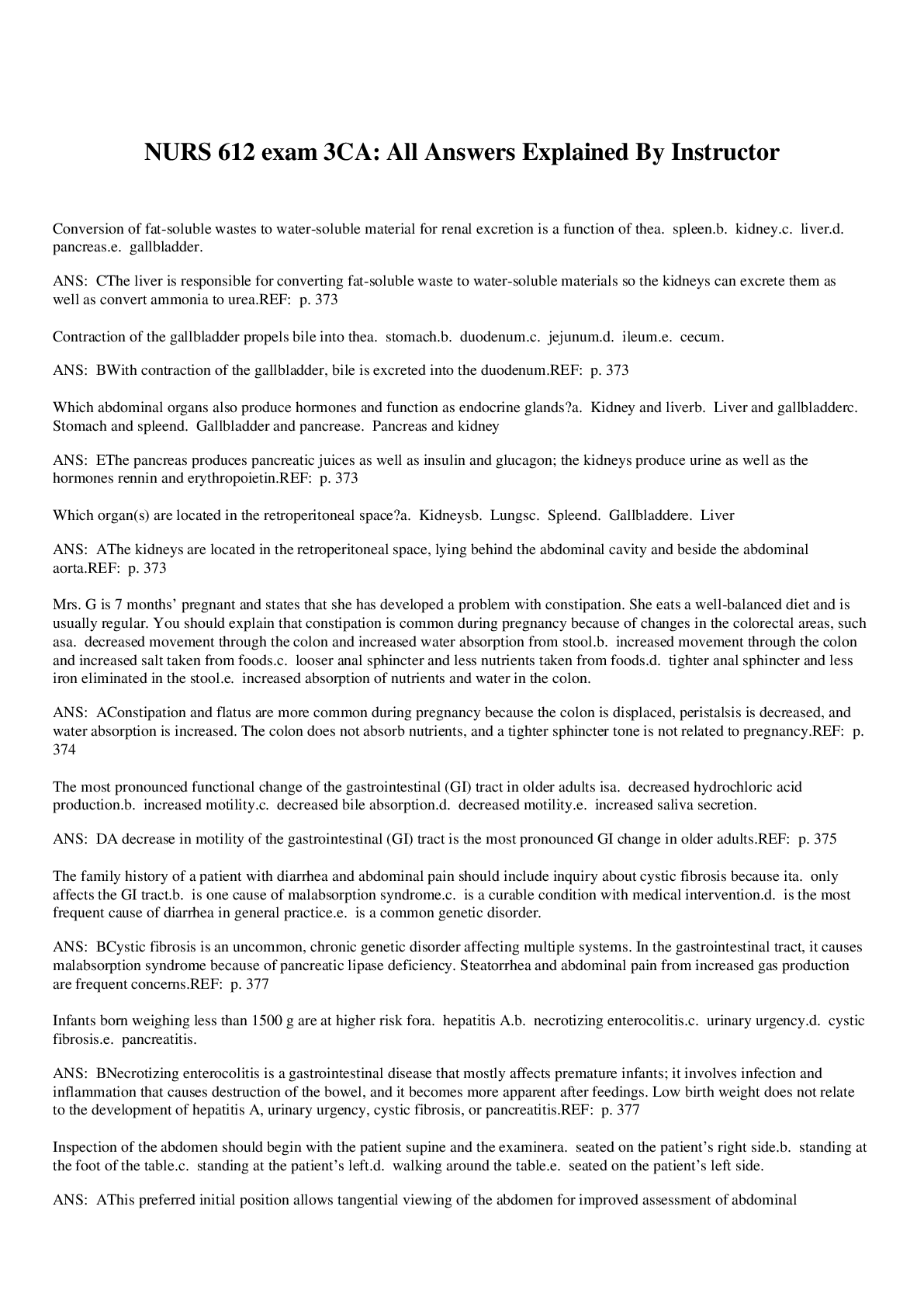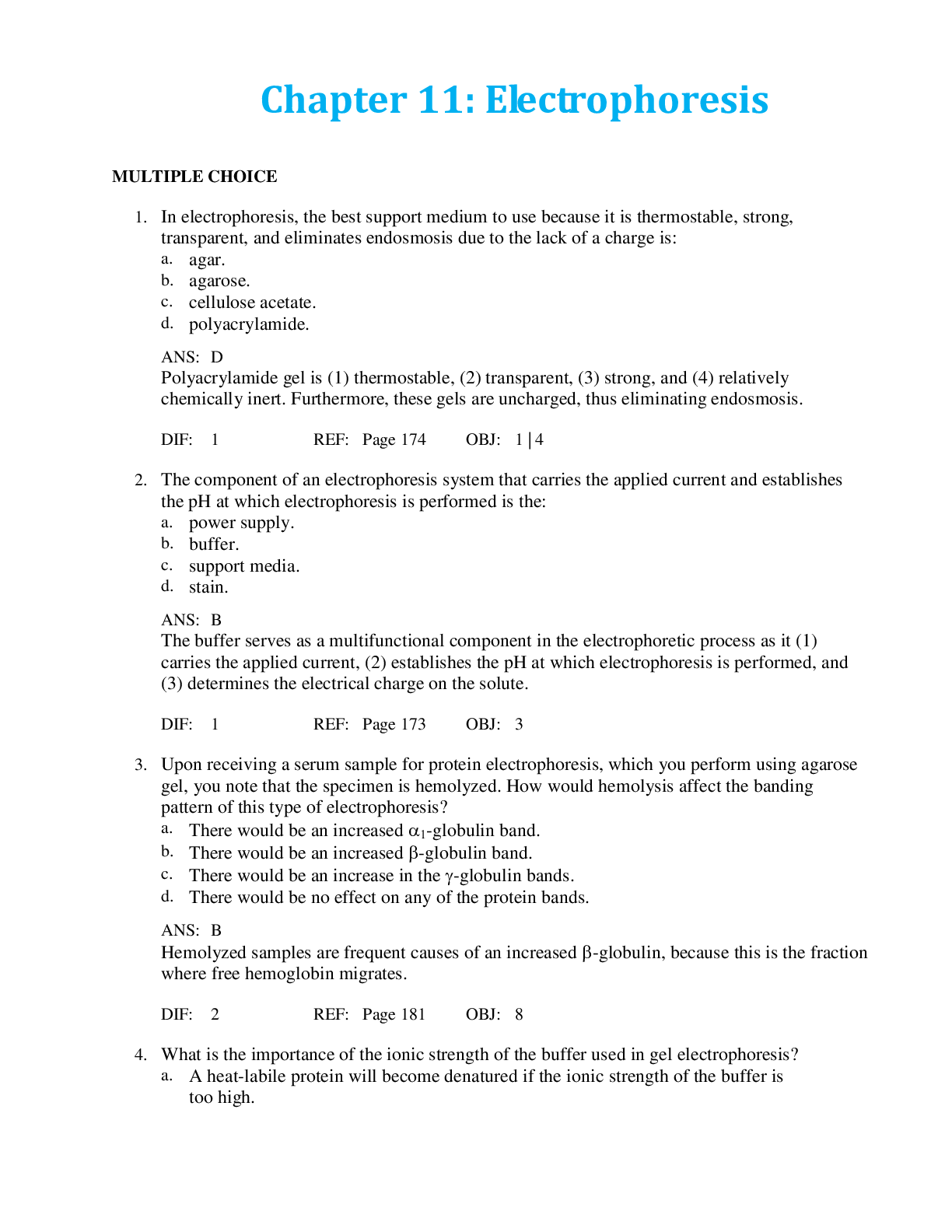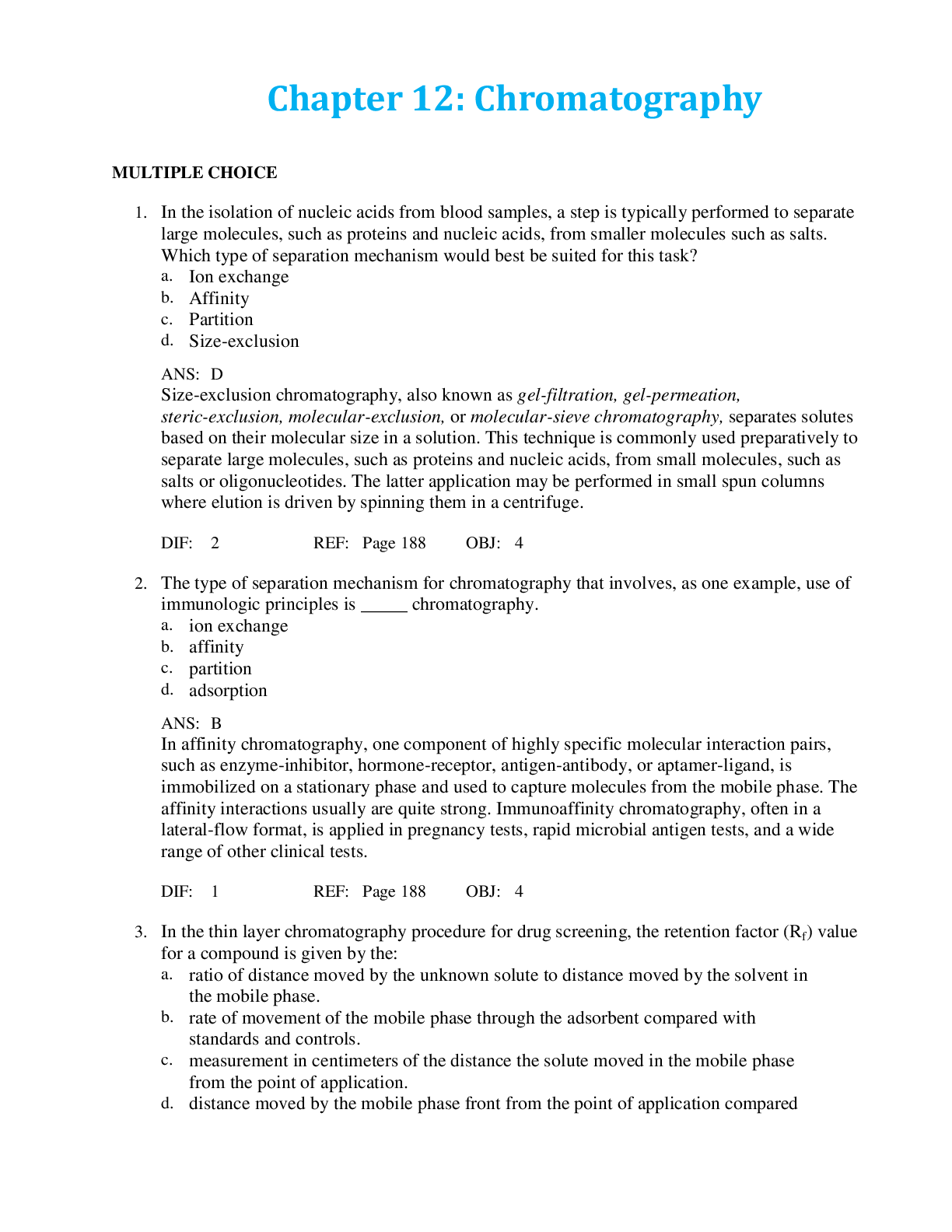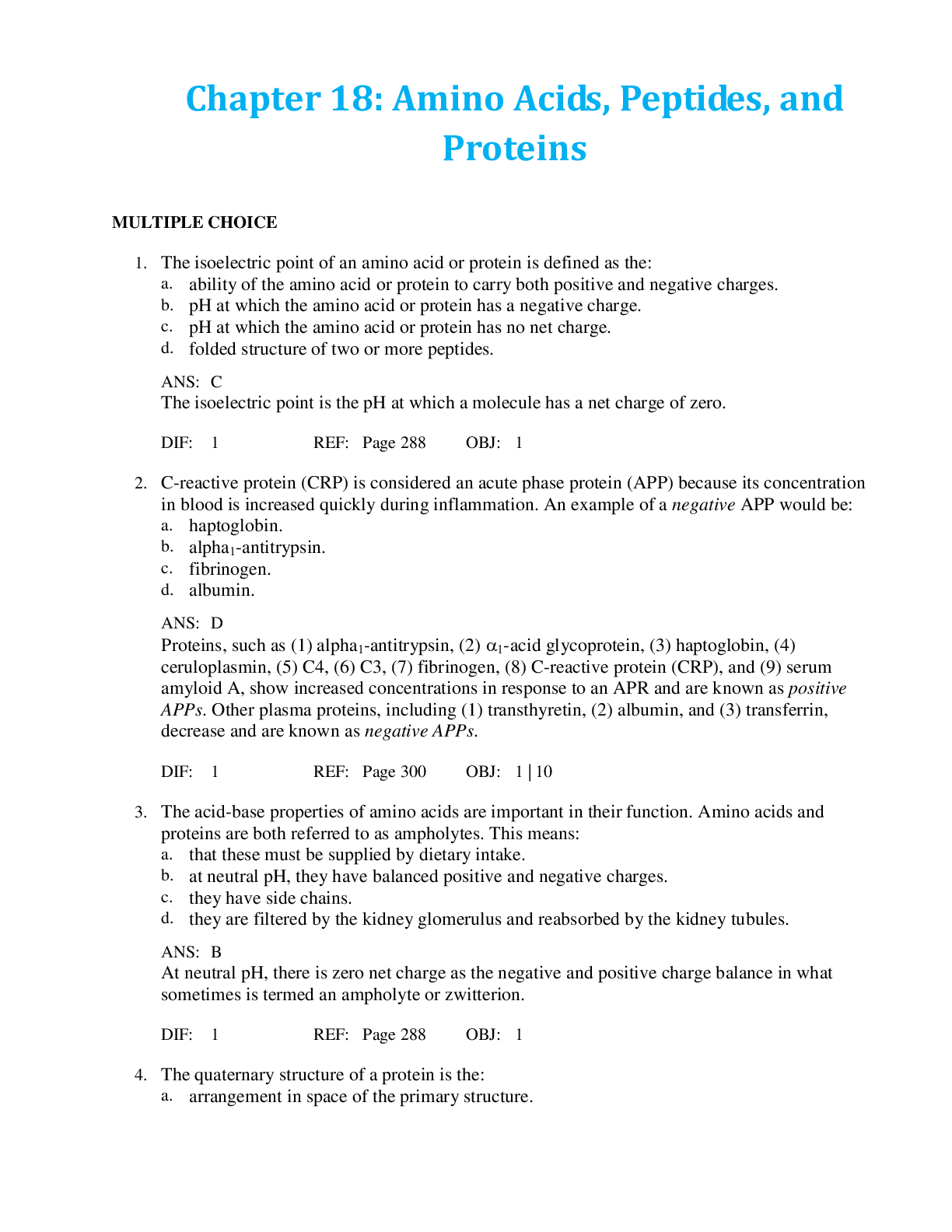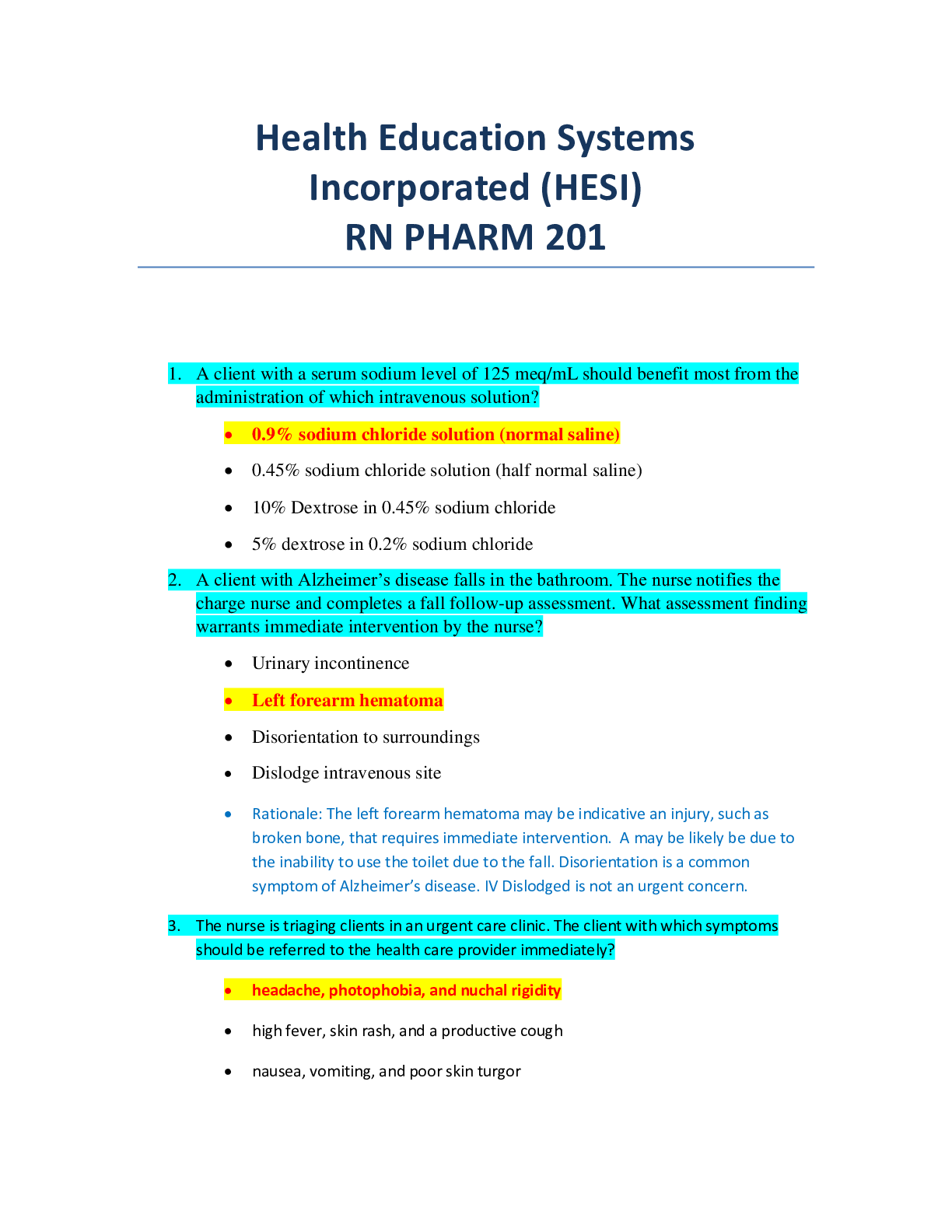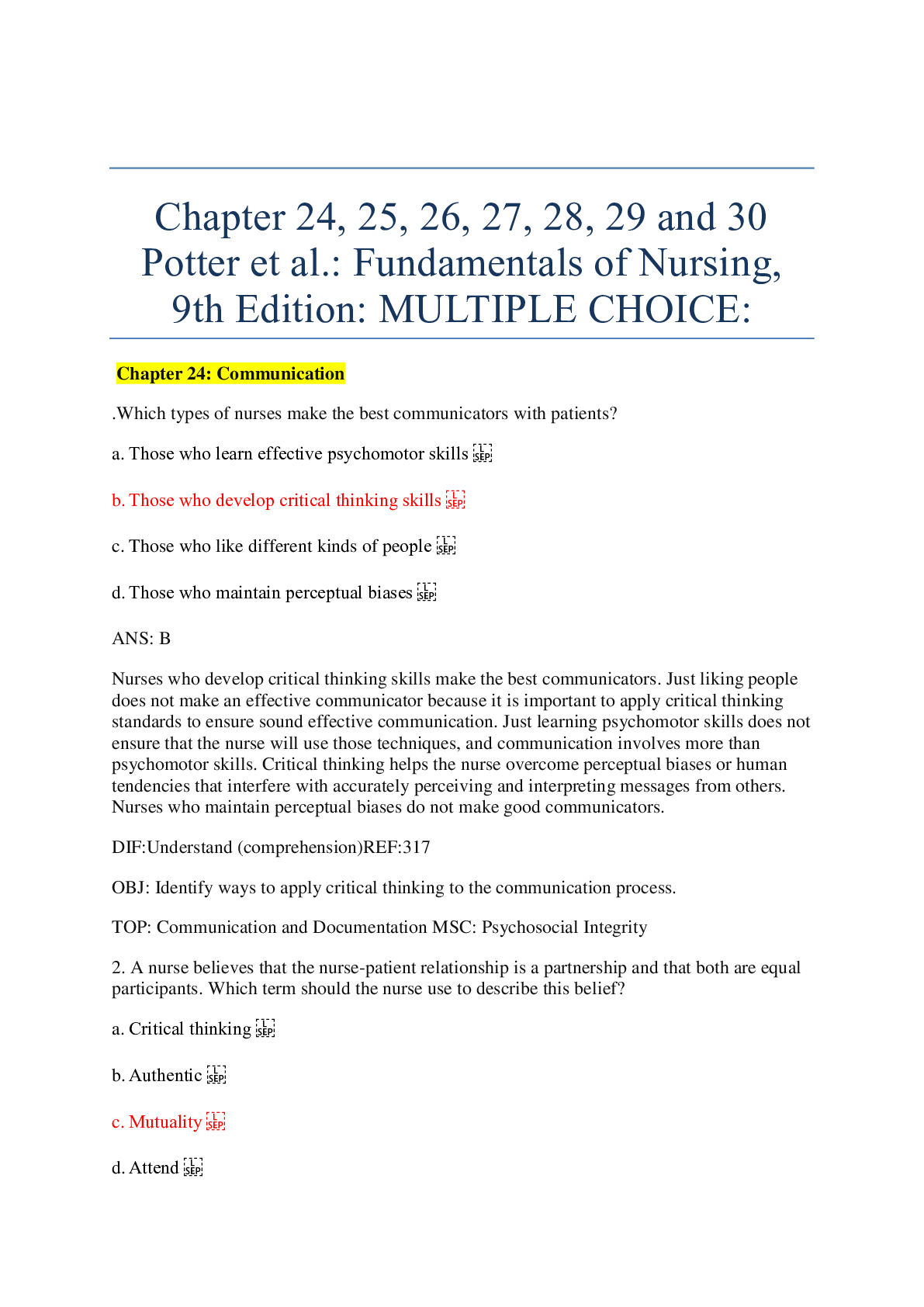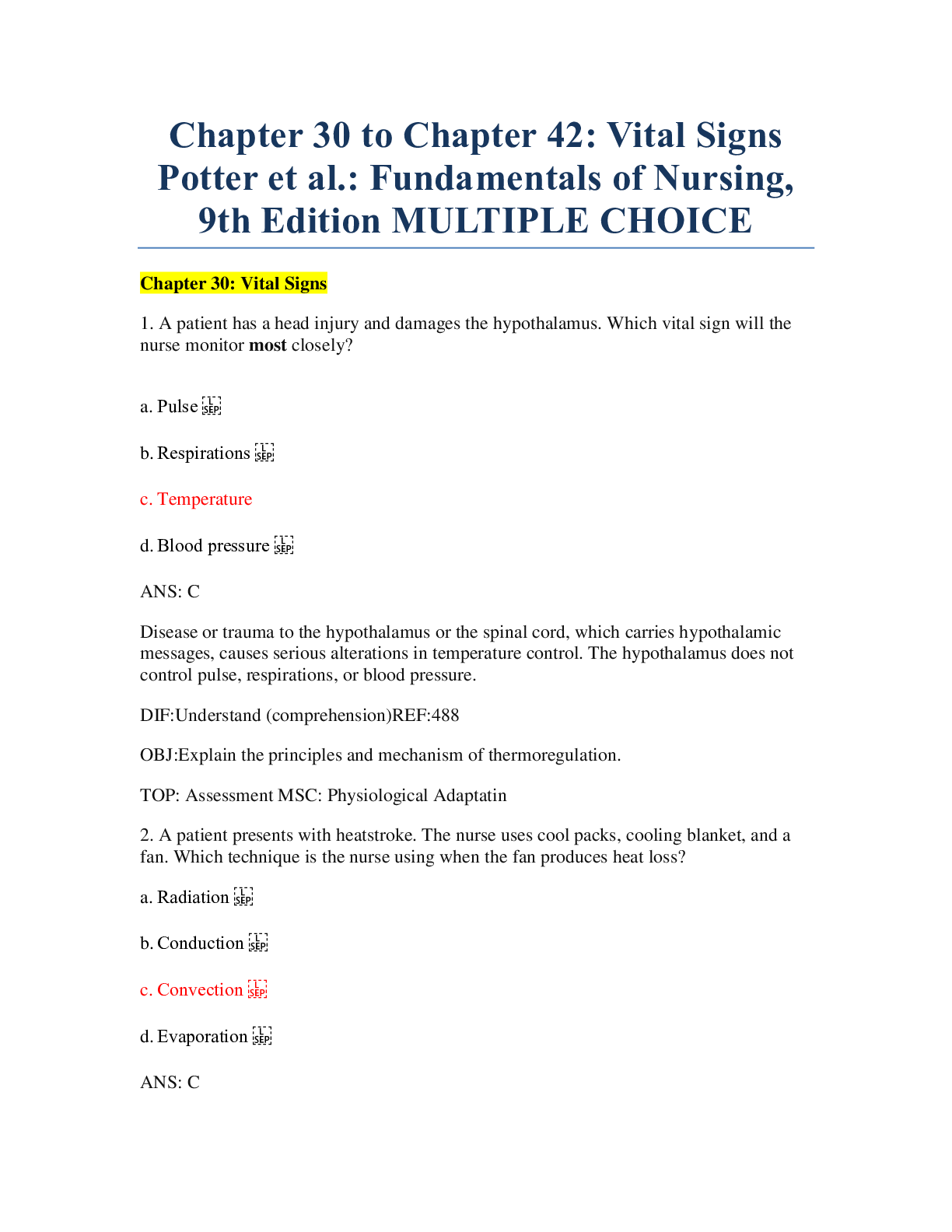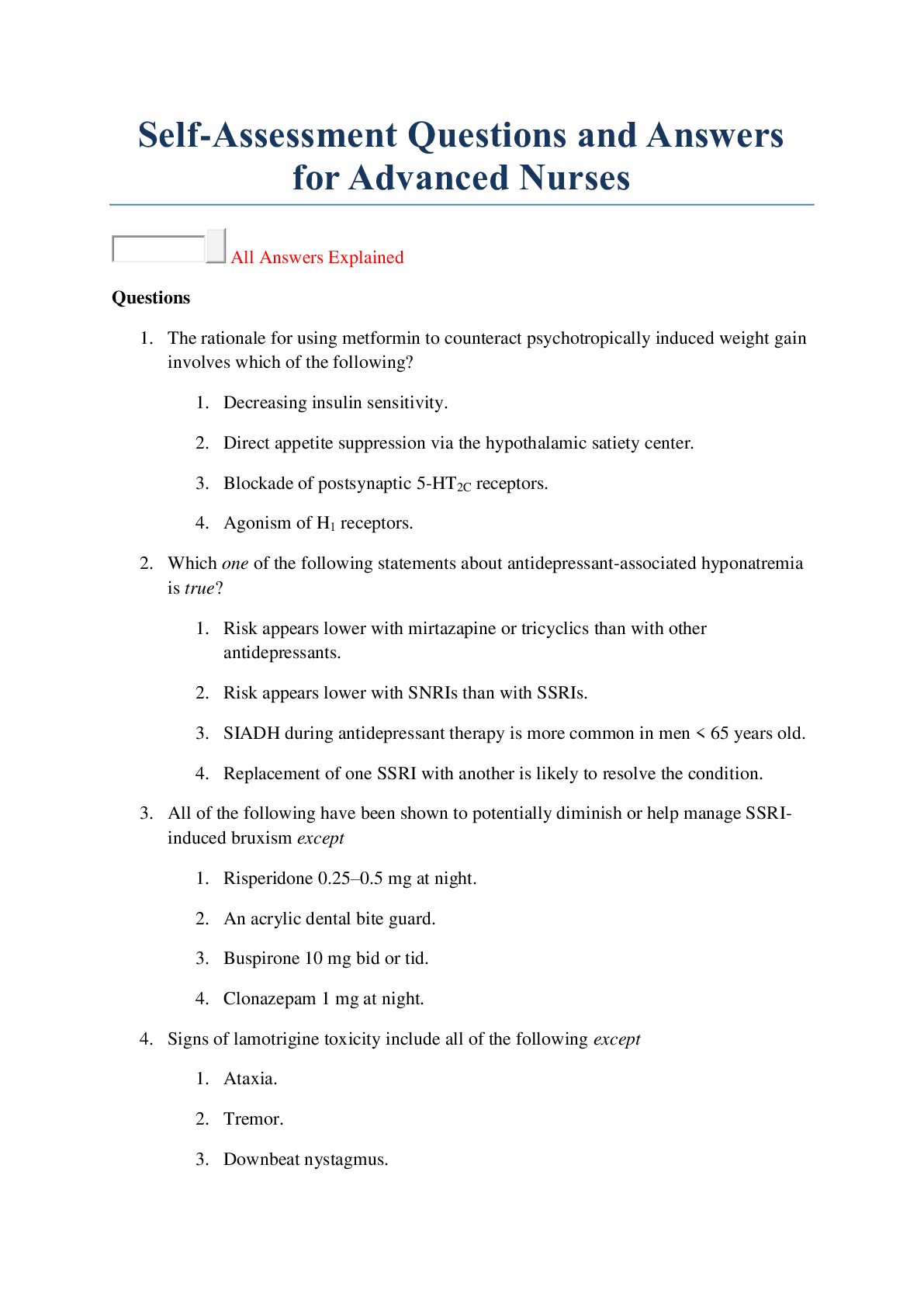Chemistry > QUESTIONS & ANSWERS > MLT230: Chapter 15: Immunochemical Techniques: All Answers Explained (All)
MLT230: Chapter 15: Immunochemical Techniques: All Answers Explained
Document Content and Description Below
MULTIPLE CHOICE 1. In this heterogeneous assay, one of the reaction components is attached to the surface of a solid phase. An aliquot of patient sample containing the analyte of interest is added... , a wash step occurs, and an enzyme-labeled antibody different from the bound antibody is added followed by the substrate. This type of assay is called: a. enzyme-linked immunosorbent assay (ELISA). b. reflectance immunoassay. c. enzyme-multiplied immunoassay technique (EMIT). d. fluorescence polarization immunoassay (FPIA). 2. The substance that is typically injected into an animal to elicit an immune response and induce formation of an antibody is the: a. antibody. b. immunogen. c. immunochemical label. d. enzyme. 3. A homogeneous fluorescence immunoassay that involves the speed of the rotation of molecules, which is then related to analyte concentration in a patient sample, is known as: a. ELISA. b. reflectance immunoassay. c. enzyme-multiplied immunoassay technique. d. fluorescence polarization immunoassay. 4. Which immunoassay uses a label that was susceptible to making serum cause a false positive because of background fluorescence? a. Enzyme b. Radioactive c. Chemiluminescent d. Fluorescent 5. Which one of the following is considered a quantitative immunoassay? a. Immunofixation electrophoresis b. Crossed immunoelectrophoresis c. Electroimmunoassay d. Western blotting 6. In the majority of clinical chemistry immunoassays, the analyte of interest in a patient’s serum is typically the: a. antibody. b. antigen. c. immunochemical label. d. labeled antigen. 7. Certain immunoassays require separation of bound reactant from free-labeled reactant for determination of analyte concentration. Which one of the following immunoassays requires this separation step? a. Fluorescence polarization immunoassay (FPIA) b. EMIT c. Cloned enzyme donor immunoassay d. ELISA 8. In an enzyme immunoassay with an enzyme-labeled antigen, if there is a high concentration of patient antigen, will there be _____ enzyme available to bind substrate. a. more b. less 9. A substance that cannot elicit an immune response alone but that must be conjugated to a carrier molecule to cause antibody production is referred to as a(n): a. antigen. b. immunogen. c. hapten. d. conjugate. 10. An antibody that has very strong affinity to a single antigenic epitope is referred to as a(n) _____ antibody. a. affinity-purified b. monoclonal c. polyclonal d. multiclonal 11. What information does crossed immunoelectrophoresis provide that basic immunofixation does not? a. It provides a qualitative immunologic assessment of specific myeloma protein fractions. b. It provides better resolution of closely related proteins. c. It specifically traps the immune precipitate within the gel for quantification. d. It involves initial electrophoresis with transfer of proteins to nitrocellulose and specific antibody binding to each fraction. 12. In an ELISA procedure, the higher the concentration of patient analyte in the test system, the _____ the amount of product formation. a. less b. greater 13. The component of an immunoglobulin molecule that determines the antigenic specificity of that antibody is the: a. disulfide bond linkage between the heavy and light chains. b. light chain. c. epitope. d. sequence at the amino terminal end of the heavy and light chains. 14. An immunoassay contains an antidigoxin antibody, a digoxin-enzyme conjugate, a substrate, and the sample containing an unknown concentration of digoxin. These components are used in which one of the following immunoassays? a. ELISA b. FPIA c. EMIT d. Electroimmunoassay 15. Which one of the following methods is not a quantitative immunoassay method? a. Nephelometry b. Counter immunoelectrophoresis (CIE) c. ELISA d. Electroimmunoassay 16. In a precipitin reaction, an excess of antigen over an antibody will lead to: a. all antigen sites bound with an antibody and no precipitate formation. b. all antibody sites bound by antigen with no formation of precipitate. c. cross-linking of antigen and an antibody with maximal precipitate formation. d. a lack of reaction between an antibody and antigen, and no precipitate. 17. You wish to determine which cells contain the protein Substance P in the skin surrounding a flesh wound. Skin scrapings are obtained, fixed in formalin, and mounted on slides. You have an anti-Substance P antiserum. What immunochemical protocol would be most appropriate to use for this experiment? a. ELISA b. Western blotting c. Double immunodiffusion d. Immunocytochemistry 18. In a noncompetitive immunoassay reaction format: a. all reactants are mixed together with both the labeled and unlabeled antigens binding to the antibody. b. an unlabeled antigen is first mixed with excess antibody and binding reaches equilibrium. Labeled antigen is then added. c. antigen from an unknown sample is allowed to react with a solid-phase antibody, and a second labeled antibody is added that reacts with bound antigen. d. bound label is inversely proportional to the unlabeled antigen concentration. 19. In a noncompetitive immunoassay reaction format, a very high concentration of analyte antigen in the unknown sample might produce a falsely: a. decreased result because the high concentration of antigen binds both the capture and labeled antibody, reducing the number of complexes formed. b. increased result because the rate of the forward reaction of antigen-antibody binding is too fast, leading to a high equilibrium constant. c. decreased result because of the free excess antigen-binding all antibody sites and not allowing any unlabeled antigen to bind. d. increased result because the second labeled antibody will be able to react with the substrate by itself since excess antigen will interfere with any binding. 20. The light-scattering immunochemical method that is considered to have the best sensitivity and a lower detection limit for serum proteins is: a. nephelometry. b. electroimmunoassay. c. turbidimetry. d. Western blotting. [Show More]
Last updated: 1 year ago
Preview 1 out of 7 pages
Instant download
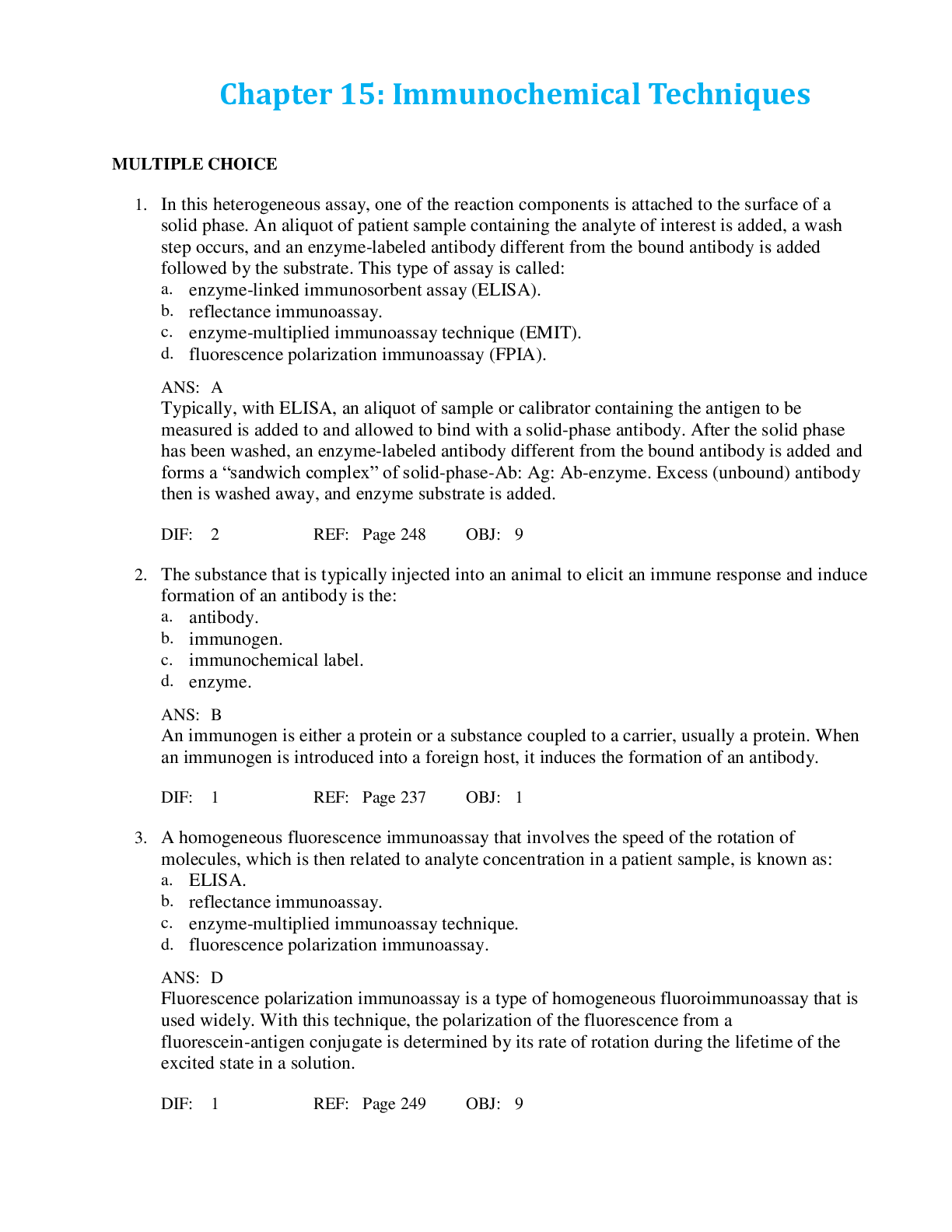
Buy this document to get the full access instantly
Instant Download Access after purchase
Add to cartInstant download
Reviews( 0 )
Document information
Connected school, study & course
About the document
Uploaded On
Feb 26, 2020
Number of pages
7
Written in
Additional information
This document has been written for:
Uploaded
Feb 26, 2020
Downloads
0
Views
76













